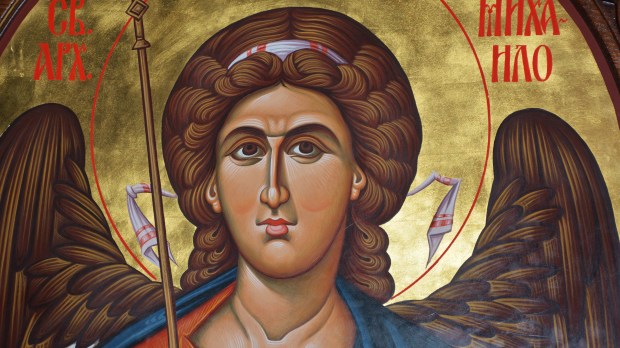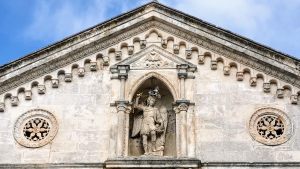The Michaelion was one of the earliest (and most famous) sanctuaries dedicated to St. Michael the Archangel in the Roman Empire. Tradition maintains that it was built in the 4th century by Emperor Constantine the Great on top of an ancient pagan temple, just north of Constantinople (modern Istanbul), in the village of Sosthenion (modern Istinye) by the European shore of the Bosphorus.
Soon enough, it became a model for many other churches in Eastern Christianity, all of them dedicated to the biblical archangel. In fact, during the reign of the next few emperors after Constantine, the number of churches dedicated to the Archangel Michael in Constantinople alone increased to 15.
It is believed that a pagan temple had existed there, associated with healing and medicine for centuries, called Sosthenion, as is the village itself. Tradition held that the temple had been built by the legendary Argonauts themselves, who dedicated it to Zeus Sosthenion – that is, Winged Zeus. As is often the case with these already-existing, long-held traditions, Christians continued to associate the location (and hence the Michaelion) with these supernatural feats, but giving them a distinctive Christian flavor: Since the heavenly warrior is known for defeating evil and protecting the faithful from harm, the sanctuary soon became associated with protection – even from bodily ailments.
Constantine’s dream
Constantine, tradition claims, did not think the statue corresponded to any Greek deity – neither Zeus nor any other winged god. On the other hand, he thought the winged statue of the temple was meant to refer to a biblical angel. After spending the night in the temple, Constantine said the Archangel Michael had visited him in a vision, telling him the image was his. Soon enough the emperor had converted the ancient pagan shrine into a church to honor Michael.
Scholars, however, claim this tradition is most likely a later invention. The late French scholar and Byzantinist Raymond Janin (the author of numerous works on Byzantine geography and history), for example, thought the Constantine narrative was created in order to compete with other local nearby great shrines built to honor and venerate the archangel – especially earlier ones, who would then hold some sort of historical primacy and merit.
A lost relic of a bygone era
Over the centuries, as has sadly happened with some of these ancient shrines, the Michaelion experienced periods of prosperity and decline, mirroring the complex history of the Byzantine Empire itself. It weathered invasions, natural disasters, and political upheavals –remaining a symbol of spiritual resilience and faith, until it couldn’t resist any more. As the Byzantine Empire waned and the region’s geopolitical landscape shifted, the shrine’s importance (along with that of the attached monastery) also diminished. It eventually fell into disrepair, and its precise location was gradually forgotten. The once-magnificent Michaelion became a lost relic of a bygone era.
The Michaelion is continuously mentioned in different texts, chronicles, and annals until 1337. After that, no testimonies are recorded that mention the shrine as still standing. Historians have hypothesized that (again, as is often the case with these legendary buildings) it was most likely demolished in the 14th and 15th centuries and used as a quarry to build nearby fortresses.



